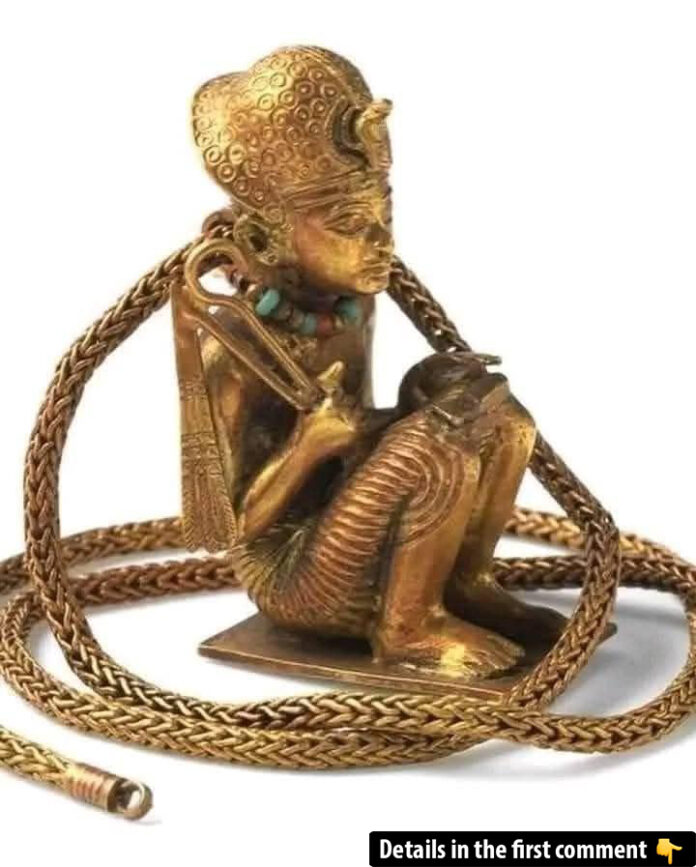Among the many treasures discovered in the tomb of King Tutankhamun, the gold pendant of Amenhotep III stands out as a remarkable testament to the artistry and cultural depth of ancient Egypt. This intricately designed pendant, featuring Amenhotep III in a regal pose, is more than just an artifact—it serves as a symbolic link between Tutankhamun and his revered grandfather. Through its craftsmanship and placement, the pendant reveals much about the traditions, beliefs, and familial bonds of the 18th Dynasty.
The Discovery of the Pendant
In 1922, British archaeologist Howard Carter unearthed the untouched tomb of Tutankhamun in the Valley of the Kings, a moment hailed as one of archaeology’s greatest achievements. Amidst the wealth of treasures, the pendant depicting Amenhotep III was found carefully placed alongside other heirlooms. This small yet significant piece was discovered within the nested coffins of Tutankhamun, near a smaller coffin inscribed with the name of Queen Tiye, Amenhotep III’s wife and Tutankhamun’s grandmother. The presence of these familial relics underscored the strong reverence for Tutankhamun’s lineage and the deep connections between these iconic pharaohs.
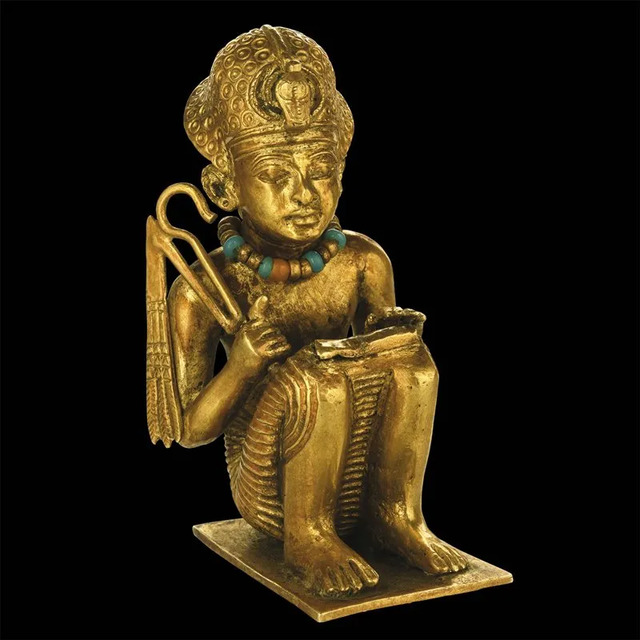
Video
Explore the reign of Amenhotep III and ask: Was he Egypt’s greatest pharaoh? Watch the Immortal Egypt video to uncover the achievements and mysteries of this powerful ruler!
Design and Craftsmanship
The gold pendant, measuring just over 5.5 cm in height, portrays Amenhotep III in a squatting position, a traditional pose symbolizing divine authority. The figure wears the Khepresh, or Blue Crown, a headpiece associated with military power and royal dignity. In his hands, he holds the sceptre and flail, unmistakable symbols of a pharaoh’s power and responsibility.
Around the king’s neck is a delicate string of colored beads, adding a vibrant touch to the otherwise golden depiction. Despite its small size, the pendant showcases the extraordinary craftsmanship of the New Kingdom, with every detail—from the folds of the crown to the texture of the jewelry—meticulously rendered. The pendant was suspended on a heavy, woven gold chain, further emphasizing its opulence and importance.
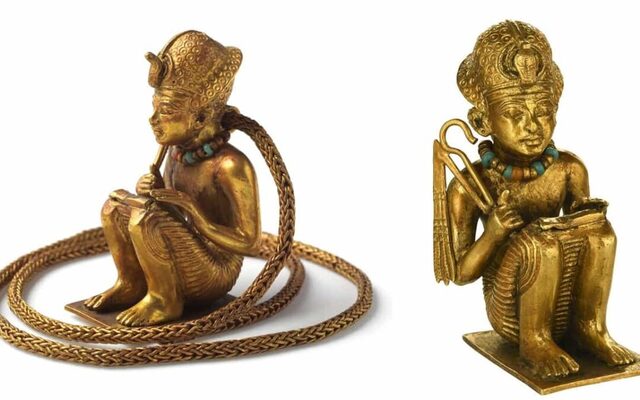
Historical Significance
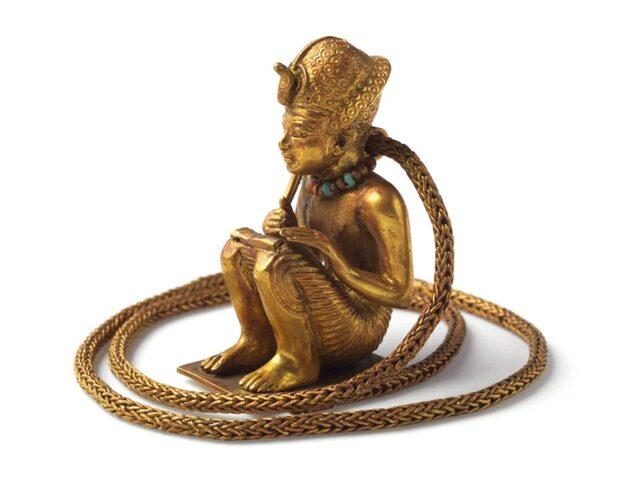
Amenhotep III, one of Egypt’s most powerful and prosperous rulers, reigned during the height of the 18th Dynasty. Known for his architectural achievements and diplomatic prowess, his legacy loomed large over subsequent generations. Although Tutankhamun never met his grandparents, the inclusion of this pendant in his tomb suggests an intentional effort to link the young king with his illustrious lineage.
During Tutankhamun’s reign, Amenhotep III was venerated as a divine figure. The pendant likely symbolized this reverence, serving as a reminder of the family’s divine ancestry and their connection to the gods. Additionally, the inclusion of a lock of Queen Tiye’s hair alongside the pendant further highlights the importance of these familial ties in Tutankhamun’s burial preparations.
Theories and Interpretations
The identity of the figure depicted in the pendant has sparked some debate among historians. While Howard Carter and many others believed it to represent Amenhotep III, some scholars have raised questions about whether the pendant might symbolize a generic pharaonic figure. However, the specific features of the Blue Crown, the scepters, and the intricate bead necklace strongly support the identification of Amenhotep III.
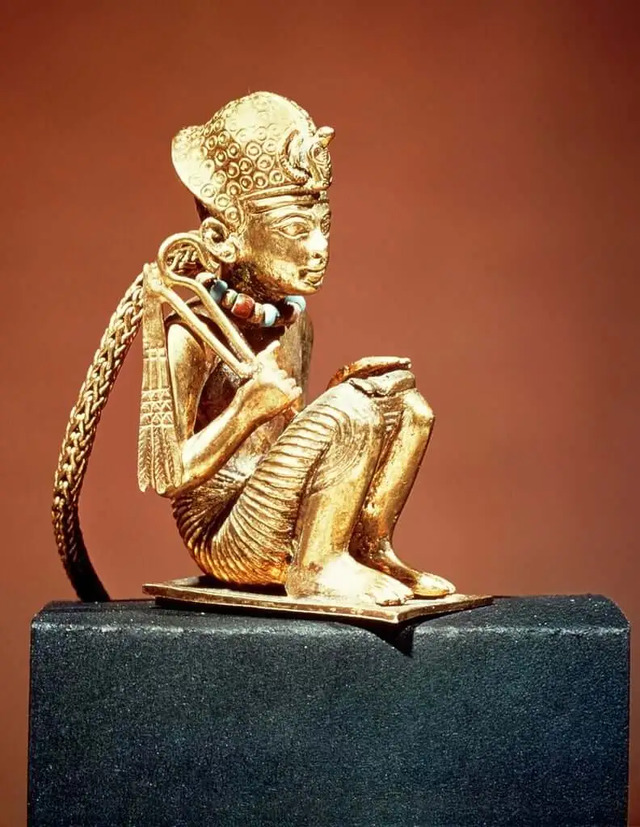
The pendant’s placement in Tutankhamun’s tomb also invites speculation. Some theories suggest that it was an heirloom passed down through generations, representing a symbolic inheritance from Amenhotep III. Others argue that its inclusion was a deliberate act by those who prepared Tutankhamun’s tomb to associate him with the grandeur and legacy of his grandfather. Either way, the pendant serves as a powerful reminder of the interconnectedness of the royal family.
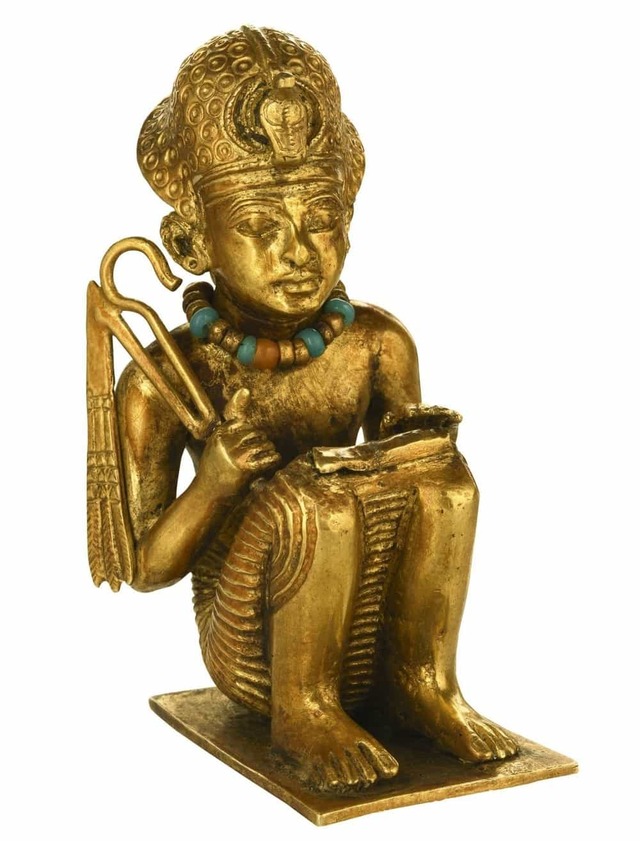
Cultural and Archaeological Value
The gold pendant of Amenhotep III is more than just an exquisite piece of jewelry; it provides valuable insights into the cultural practices and values of ancient Egypt. Its intricate design reflects the advanced level of artistry achieved during the New Kingdom, while its symbolism offers a glimpse into the beliefs surrounding royalty and divinity.
The pendant also sheds light on the burial customs of the time. The inclusion of heirlooms and personal items in royal tombs was not merely for decorative purposes; it was a way to ensure the deceased’s connection to their ancestors and the divine in the afterlife. For Tutankhamun, the presence of this pendant signified his continuity with a lineage of powerful rulers and his rightful place in the divine order.
Video
Watch the excavation of Tutankhamun’s mummy in King Tut in Color – discover the fascinating details and secrets behind one of history’s most famous tombs!
Conclusion
The gold pendant of Amenhotep III, discovered in Tutankhamun’s tomb, is a treasure of immense historical and cultural significance. Its intricate craftsmanship and symbolic design offer a unique window into the traditions and beliefs of ancient Egypt. More importantly, it serves as a tangible link between two of history’s most famous pharaohs, encapsulating the reverence for family, legacy, and divine connection that defined the 18th Dynasty. As scholars continue to study this remarkable artifact, it remains a testament to the enduring allure of ancient Egyptian civilization and its unparalleled artistry.
